Introduction
When my wife and I opened The Water House Project in the autumn of 2021, there wasn’t a conversation happening in the culinary industry about non-alcoholic drinks. Culturally we’re so attached to alcohol, and drinking has become synonymous with dining out in a similar way to the concept of a meal not being a meal without meat.
“With so many new paths we can now take with our dish and drink pairings through the use of non-alcoholic drinks, we have been able to produce an interesting take on the fine dining experience.”
But we have a lot of guests comment on the non-alcoholic pairings we offer, saying how they don’t feel like they have missed out at all by not having an alcoholic pairing with their meal. If anything, it almost added to their experience. I think it’s because having a non-alcoholic pairing with a meal gives the guest a new experience they may not have had before, and also offers my team and me a new dimension in terms of flavor to work with. With so many new paths we can now take with our dish and drink pairings through the use of non-alcoholic drinks, we have been able to produce an interesting take on the fine dining experience, bridging the differences between informal, comfortable dining and the elegance of fine dining.
The Journey To An Alternative Choice
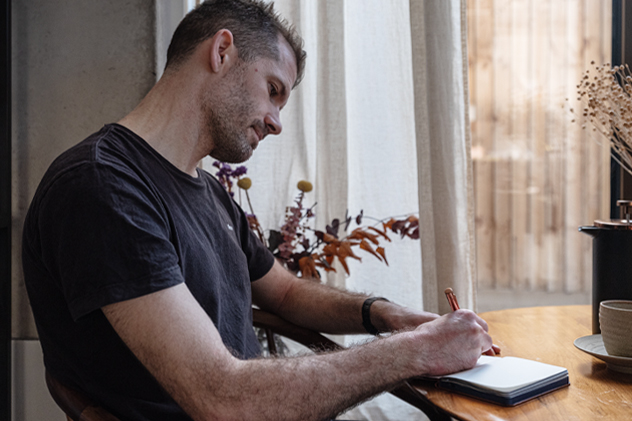
Two years ago, we were in a different restaurant space that was much smaller than what we have now. We were restricted in how much we could experiment and play with our non-alcoholic ideas. There was also the pandemic which meant that there was never really a chance to evolve within that space. When we moved to our current restaurant space, things changed. Before we opened here, everyone drank. Everyone was having a wine pairing with their meals. Then, everyone decided they would either have water or not have a drink at all. In our restaurant, I insist on a drink pairing that fits the dish because I think it brings a lot more to the experience.
I don’t know if it was the pandemic that influenced people’s drinking habits and made them turn to healthier, non-alcoholic options, but it felt very suddenly obvious that we needed to have an alternative for people who were not drinking alcohol.
We thought that it was really important to create a non-alcoholic pair that stood up to what we were offering in terms of the wine because you don’t really get a choice when you aren’t drinking; it’s usually only water or something sweet that is available to you.
Wine Vs Non-Alcoholic Pairings
I’ve never understood trying to recreate something by removing the main element of what you’re trying to emulate, like vegan meals trying to recreate meat. I think non-alcoholic pairings shouldn’t try to recreate wine pairings. Instead, it should be something individual, something that is its own thing. If you try to recreate something, the result is going to be less than the original. It is better to approach the new creation with fresh eyes and a completely open perspective.
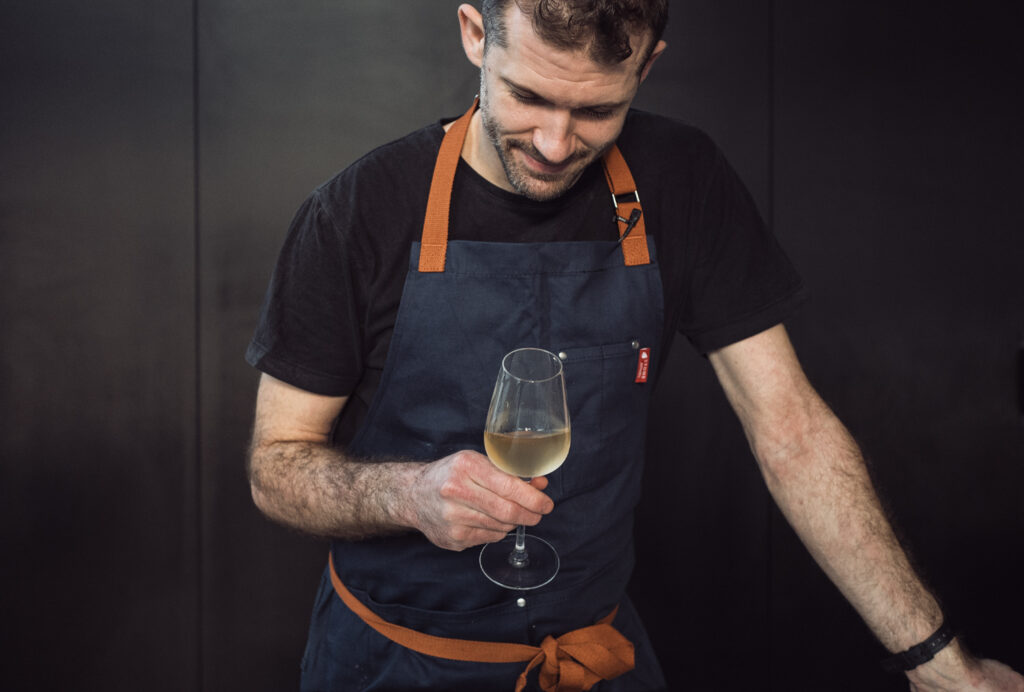
Obviously, there will be certain parallels, especially when it comes to non-alcoholic and alcoholic pairings for the same dish. If you’ve got a wine that has a lot of acidity then you’re going to want a dish with the same thing. Or let’s say you have a sweet wine, you’re going to need a sweet pairing with it, otherwise, the drink will start to detract from the dish. The same applies to non-alcoholic drinks.
That interaction is quite interesting to me. When the pairing is done right, the wine almost acts like a catalyst when it hits the food and accentuates the flavor of the dish. I’m not sure that you necessarily get the same interaction with a non-alcoholic pairing. You do get another element with a non-alcoholic pairing as it brings something else to the dish, whether that be a cleansing element or a deep umami flavor. But it is also important to realize the side that you miss out on so that you can figure out how to push the other elements that it brings to the dish instead.
Our Drink Making Process
When I’m creating a non-alcoholic drink, I look at it in the same way I would a dish and question what it needs, and what it’s missing. What will really elevate it?
The first incarnations of the non-alcoholic drinks we serve now were much simpler. I started by infusing flavors like fresh herbs or seeds into water in a similar way to herbal tea. Herbal teas and infused drinks are not complicated but people skimp out on the flavor because you need to put a lot into the drink to get a decent flavor. I also found that experimenting with various vinegars with a bit of sugar, lemon juice or citric acid to be good starting points for developing non-alcoholic drinks.
“It’s all about the depth of flavor that the drink can bring to the dish. You don’t want a shallow drink otherwise the flavor will fall flat compared to the dish, and we want to make the drink its own star.”
My aim was to look at a dish and identify the flavors within it that could be translated into a drink. That process is still the same in the restaurant today when inventing new drinks, but we’ve built up a repertoire of techniques we’ve used in the past that make it simpler whenever we change the menu. In fact, the first approach I take now when we change the menu is to look through the old pairings we’ve done to gauge what might work. We constantly come up with new drinks as we change our menus in their entirety every three months, but some of our staples can be reinvented or reused as they are that versatile.
Once you get an understanding of general flavors and develop a formula for how to do things, it becomes a lot easier to approach drink pairings with new dishes. I feel like the process is slightly intuitive as well. You’ll try something and figure out what it needs or doesn’t need quite quickly, in the same way you would when experimenting with a new dish.
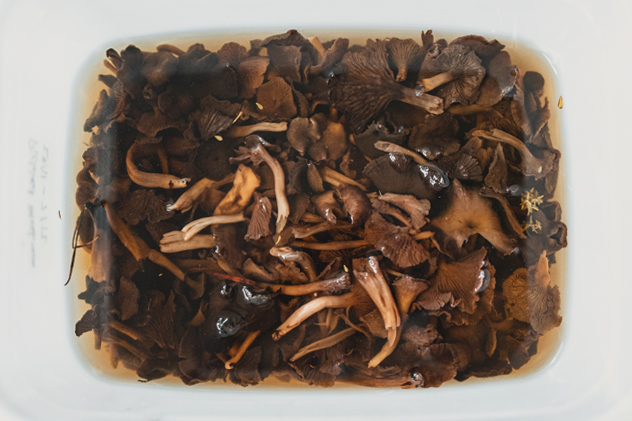
Something I have realized throughout the stages of inventing non-alcoholic alternative pairings for our menus is that it’s all about the depth of flavor that the drink can bring to the dish. You don’t want a shallow drink otherwise the flavor will fall flat compared to the dish, and we want to make the drink its own star. Fermenting, pickling, or even various vegetable broths are a great way to bring that depth to any dish. You can use the techniques by themselves or combine them, but either way, having a depth of flavor is the important part. It is the part that takes a little longer to create. With wine, the basic elements like the acidity and dryness are fairly simple to create but it’s the depth of flavor that backs it all up. It is the same case for non-alcoholic drinks.
In our restaurant, we get it by using various techniques and looking at different elements of a dish. We like to use flavors that will complement a dish, using similar ingredients or ground flavors. There are a lot of vegetable broths using root vegetables that act as the base for our non-alcoholic drink pairings, which we then infuse with other things like pickles. They bring that vinegar base with a slight sweetness which just lifts the whole drink.
A Cleanser
One of the non-alcoholic drinks that acts as a staple in the restaurant is an infusion made from coriander seeds, bay leaves, star anise, fennel seeds and thyme. It’s quite an elegant drink that ticks a lot of boxes in terms of depth of flavor. It is also one of the simplest drinks that we have, but I think it’s very effective and works so beautifully that we can pair it with many dishes.
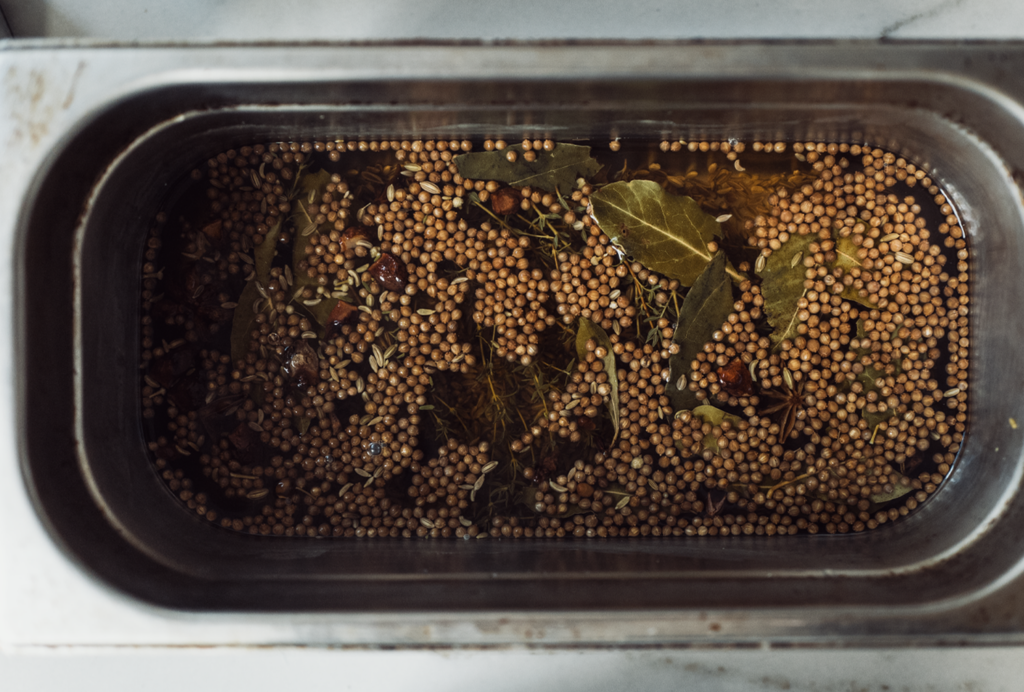
We make the drink by toasting off the fennel seeds and coriander seeds, which adds a nuttiness to help dilute the slight sweetness of the drink. Then we add star anise and bay leaves to the pan to toast a little. We add thyme and infuse it with white wine vinegar and a little bit of sugar. At the end, some mineral water is added and everything is passed through a fine muslin cloth to catch all those seeds and leaves. That’s it. It is just a very, very simple infusion. The little bit of sugar balances the acid of the vinegar but that’s the most complicated part. What is even nicer is that the seeds bring a lovely color to the drink so that it almost looks like the color of wine, which I think is a really nice finishing touch.
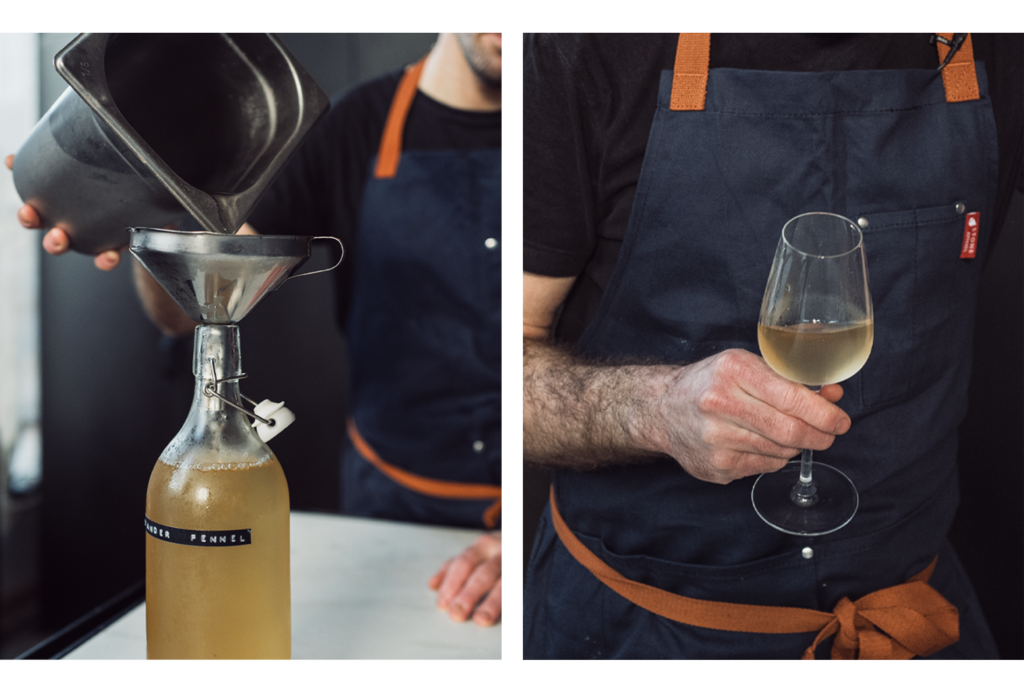
The drink has a hint of acidity and a slight sweetness which pairs so well with so many dishes, especially fish. At the moment, we serve the drink with a dish of mussels from St Austell Bay in Cornwall. We smoke the mussels and sit them in a broth made from Jerusalem artichokes. We juice the artichokes and get the liquid from them so it’s quite a light, beautifully rich umami dish. Some seaweed is also added to bring the dish together which makes it quite a salty and well-seasoned dish.
With seaweed and its rich umami flavor, the dish itself can be quite overwhelming. That is why the drink works so nicely alongside it, as it brings a lot of freshness and helps to balance the dish, cutting through those more intense flavors. The drink is quite cleansing in that sense to contrast the broth. It provides a resetting of your palate. I think that’s probably why it works so well.
An Experience
There is a dish we have that uses pollock which we serve with pierre dameito mushrooms. The dish itself is quite basic, but we serve it with quite an elaborate drink that completely transforms it.
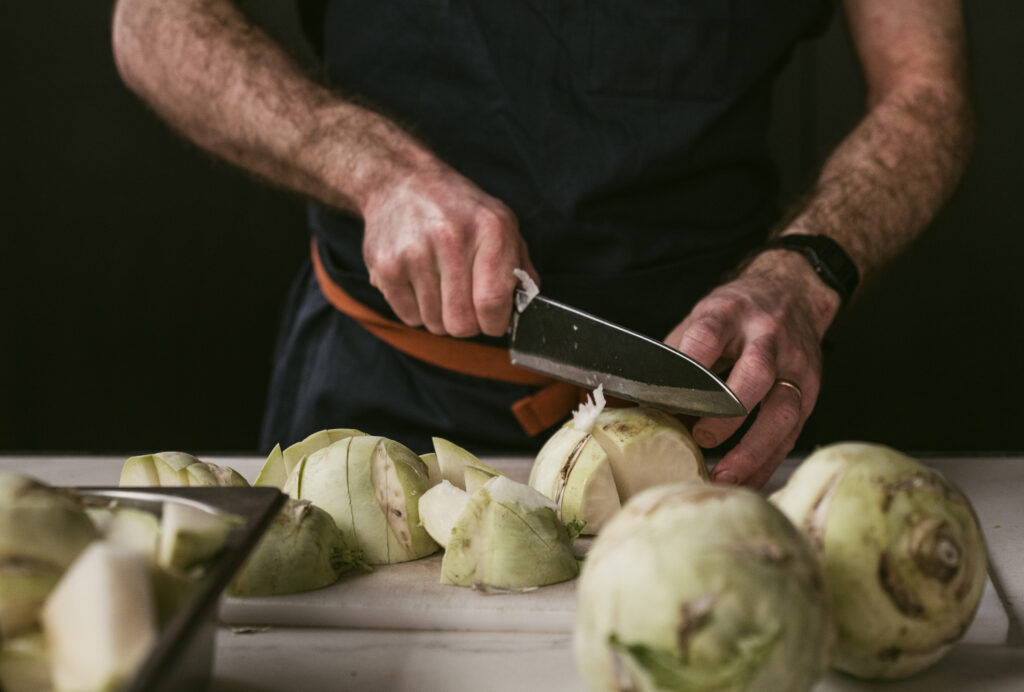
The main body of the drink is a broth made from kohlrabi, which is a small, round vegetable that is a member of the cabbage family, though it doesn’t look like a cabbage. When it’s fresh, kohlrabi doesn’t smell that nice, it’s quite eggy in smell, but we reduce the whole vegetable down and add the skins of black garlic to the pan. When it reduces down, the kohlrabi takes on a sweet, caramelized note as the two infuse. Then we pass the broth through a fine cloth.
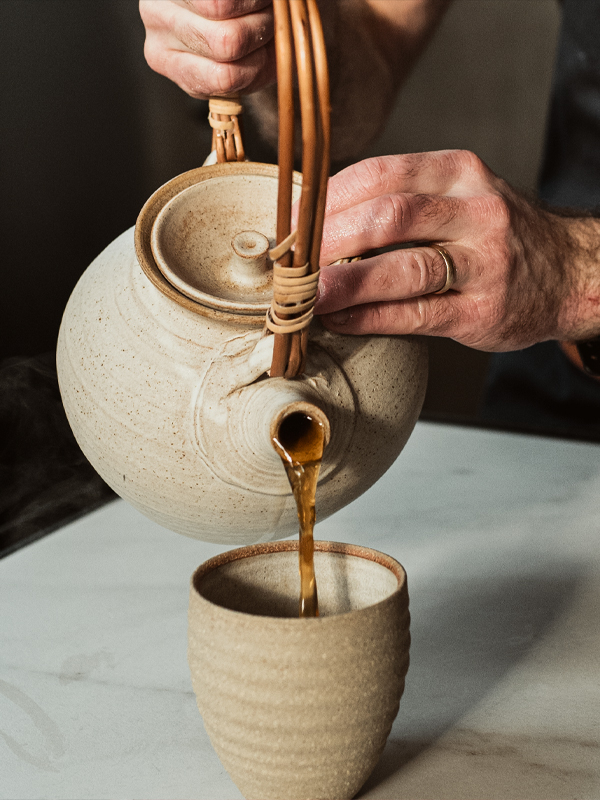 By itself, the broth can be quite flat. That is why we also add some acidity by pickling the same mushrooms that we use in the pollock dish. The pickle we use is a 1:1:1 ratio of sugar, water and vinegar, which we then use as a seasoning for the broth.
By itself, the broth can be quite flat. That is why we also add some acidity by pickling the same mushrooms that we use in the pollock dish. The pickle we use is a 1:1:1 ratio of sugar, water and vinegar, which we then use as a seasoning for the broth.
On top of all that, we serve an oil that we’ve made from koji. That is a mold that we grow in the restaurant on the black of pearl barley. We buy the spores, it takes about two days to grow on the barley and then we blend it into olive oil at 80 degrees. This pulls the lovely fruity, nutty flavors out of the mold and infuses them into the olive oil. The infused olive oil is left to sit on some rice for about 24 hours and is then passed off to be used on top of the broth drink.
The pollock dish that we serve the drink with is very earthy. I feel that it is a very appropriate dish for autumn, especially with the mushrooms which are coming to the end of their peak season. Because of their earthiness, you always need something that lifts mushrooms. Having that seasoning of the pickle in the broth right at the end completely transforms the dish.
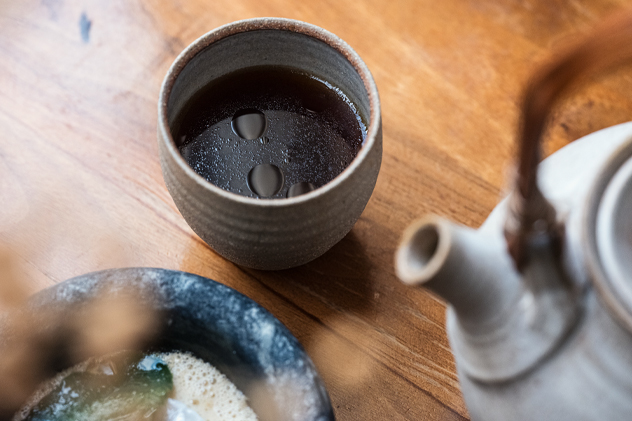
A Sweetener
I think that sweet wines are hard to come by as it’s hard to get the right balance. Some are just like syrups and need to be let down, while others aren’t sweet at all. That’s the great thing about non-alcoholic drinks, you can just create it how you want. For example, one of our sweet options is a drink where we add heather honey, which is really quite aromatic. It’s strong and almost slightly medicinal. But the drink itself is nothing like a syrupy wine.
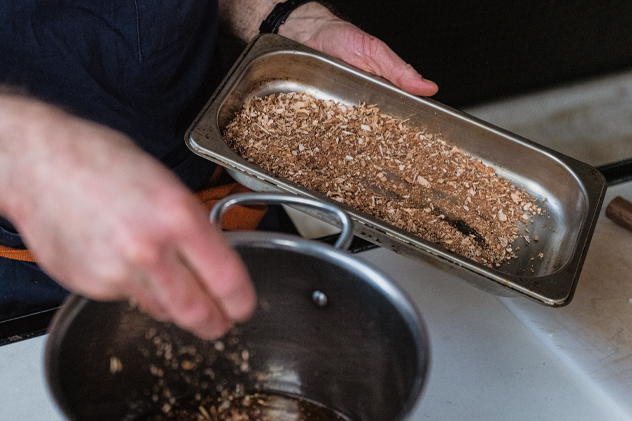
We infuse the honey with birch bark which adds the tannins you would expect of wine. Tannin brings another facet to the drink, another layer of complexity and a bit of texture. It’s hard to describe but it is noticeable and I think it’s something you wouldn’t expect from a non-alcoholic drink, that extra layer. In the case of our honey drink, the use of bark and added tannins creates that all-important depth of flavor.
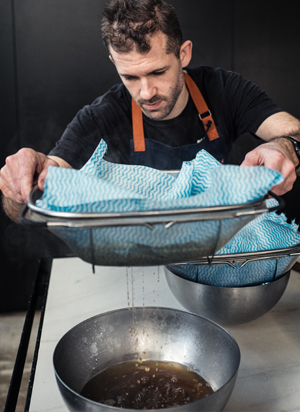 To finish it all off, we add some citric acid that helps to remove the clawing sweetness of the honey. We don’t use lemon juice as it has too much flavor, whereas with plain citric acid, you get that acidity without added flavor. You can’t really do that with wine, just add acidity. But it does completely balance out the drink and removes some of the overwhelmingly sweet notes of the heather honey. Finally, we let the drink down with a tiny bit of sparkling water to give it a final lift.
To finish it all off, we add some citric acid that helps to remove the clawing sweetness of the honey. We don’t use lemon juice as it has too much flavor, whereas with plain citric acid, you get that acidity without added flavor. You can’t really do that with wine, just add acidity. But it does completely balance out the drink and removes some of the overwhelmingly sweet notes of the heather honey. Finally, we let the drink down with a tiny bit of sparkling water to give it a final lift.
Though it is quite sweet, the drink is very versatile. We tend to pair it with an apple dish but it can be used for so many other pairings. As far as sweet drinks go, it is a good one and it works well.




